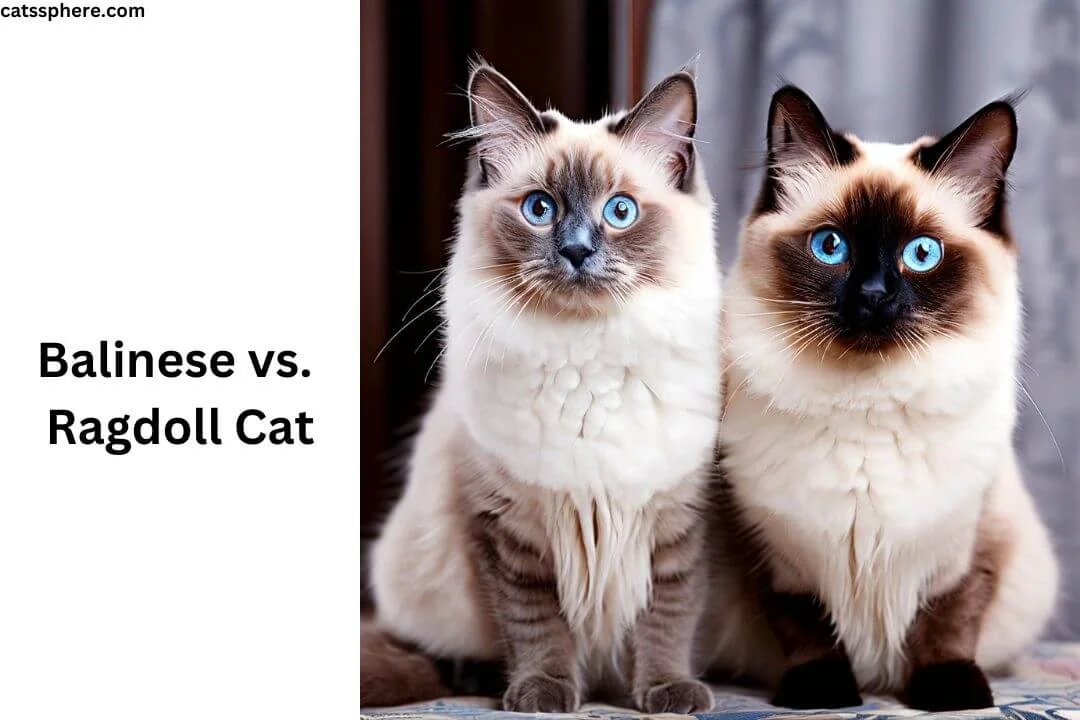Choosing the right cat breed can be a challenging task, especially when faced with two charming options like the Balinese vs. Ragdoll Cat. Each breed has unique characteristics and appeals, making them suitable for different types of owners. In this article, we’ll explore the history, physical traits, temperament, care requirements, and much more to help you decide which breed is the perfect fit for you.
History and Origin
Balinese Cats
The Balinese cat, despite its exotic name, has its origins in the United States. In the early 1940s, breeders noticed long-haired kittens appearing in Siamese litters. These long-haired kittens were initially considered anomalies but eventually caught the eye of breeders and cat fanciers. By the 1950s, a selective breeding program was underway to establish the Balinese as a distinct breed. Named after the graceful dancers of Bali, the Balinese cat gained recognition for its elegant appearance and affectionate nature.
Ragdoll Cats
The Ragdoll cat has a more recent origin story. Developed in the 1960s by breeder Ann Baker in California, the Ragdoll is a result of crossing several different long-haired breeds, including the Persian, Burmese, and Birman cats. The goal was to create a cat with a striking appearance and a docile temperament. The breed was named “Ragdoll” because of its tendency to go limp and relaxed when picked up, much like a child’s ragdoll toy. This unique trait, along with their stunning blue eyes and plush fur, quickly made them popular.
Physical Characteristics
Balinese Cats
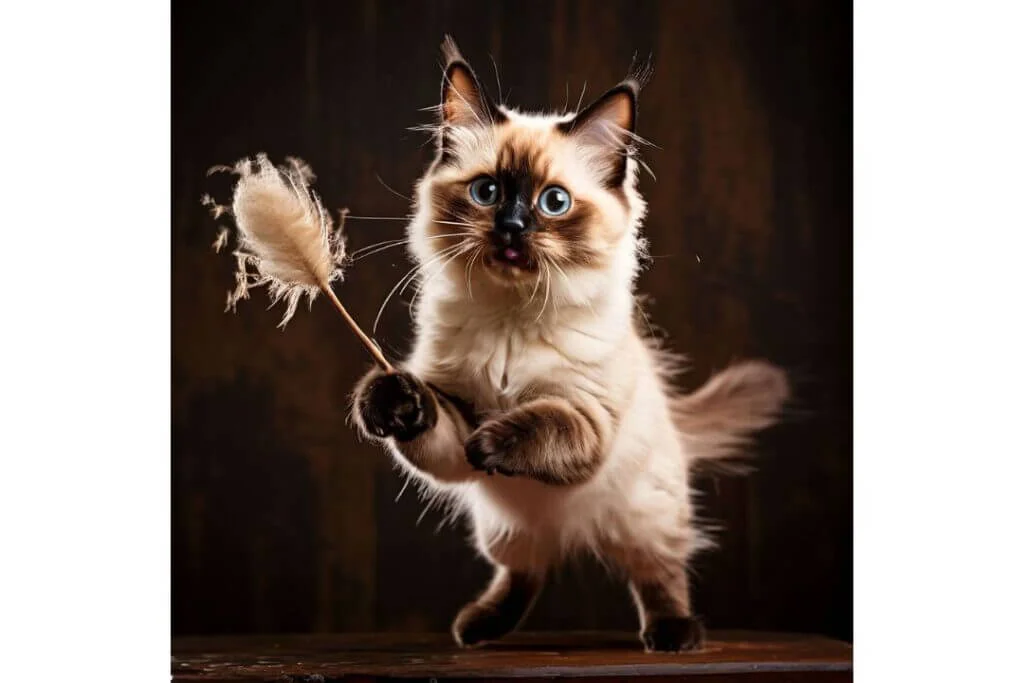
Size and Body Structure
Balinese cats are medium-sized with a sleek and slender build. They possess a fine bone structure and are known for their graceful, elongated bodies.
Coat and Colors
Balinese cats have a silky, medium-length coat that lies close to the body. They come in a variety of colors, including seal, blue, chocolate, and lilac points.
Eyes and Facial Features
Their almond-shaped eyes are a striking deep blue, and their face has a triangular shape, giving them an elegant and somewhat exotic appearance.
Ragdoll Cat
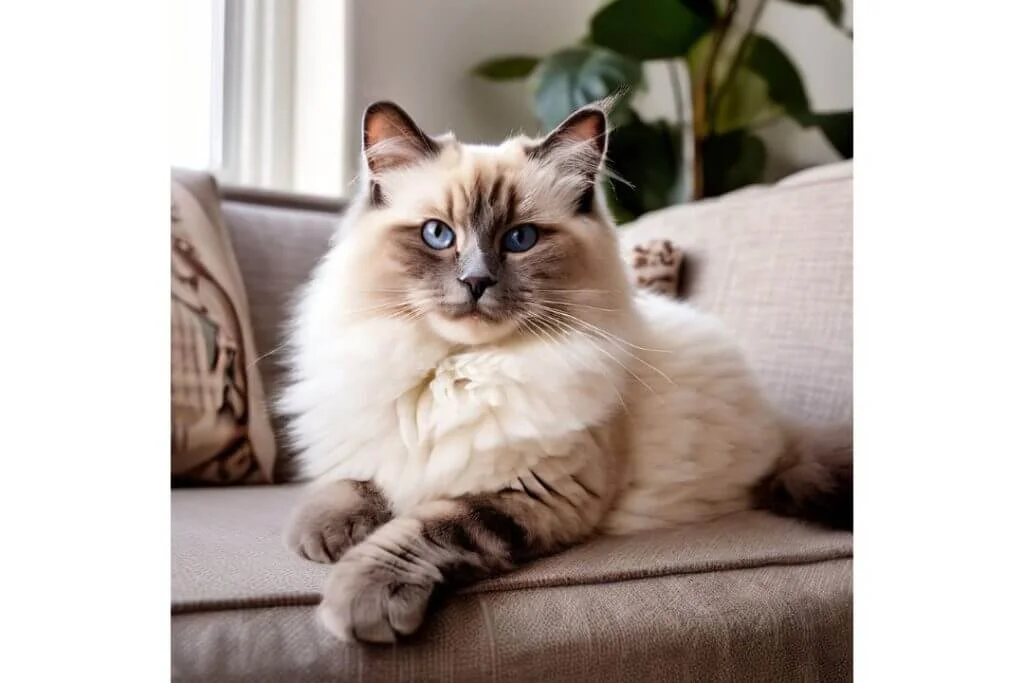
Size and Body Structure
Ragdoll cats are one of the largest domestic cat breeds, with males weighing between 15-20 pounds and females between 10-15 pounds. They have a robust and muscular build.
Coat and Colors
Ragdolls have a semi-longhaired coat that is soft and plush. Their coat patterns include colorpoint, mitted, and bicolor, with colors ranging from seal, blue, chocolate, lilac, to red and cream.
Eyes and Facial Features
Ragdolls are renowned for their captivating blue eyes and sweet, open expressions. Their face is broad with a flat plane between the ears.
Temperament and Personality
Balinese Cats
General Behavior
Balinese cats are known for their playful and energetic nature. They are highly intelligent and curious, often engaging in interactive play.
Interaction with Humans
These cats form strong bonds with their human companions and enjoy being part of family activities. They are vocal and love to communicate with their owners.
Interaction with Other Pets
Balinese cats generally get along well with other pets, including dogs, as long as they are introduced properly.
Ragdoll Cats
General Behavior
Ragdolls are famous for their calm and relaxed demeanor. They are less active than Balinese cats and prefer lounging around the house.
Interaction with Humans
These gentle giants are known for their affectionate nature. They love to be cuddled and will often follow their owners from room to room.
Interaction with Other Pets
Ragdolls are sociable and typically get along well with other cats and dogs. Their easygoing nature makes them adaptable to multi-pet households.
Care and Maintenance
Balinese Cats
Grooming Needs
Despite their silky coat, Balinese cats have minimal grooming requirements. Regular brushing once a week is usually sufficient to keep their fur in good condition.
Diet and Nutrition
A balanced diet rich in proteins and low in carbohydrates is ideal for Balinese cats. High-quality commercial cat food, either dry or wet, is recommended.
Health Concerns
Balinese cats are generally healthy but can be prone to dental issues and certain genetic conditions like progressive retinal atrophy (PRA).
Ragdoll Cats
Grooming Needs
Ragdolls have a thicker coat that requires more maintenance. They need to be brushed at least twice a week to prevent mats and tangles.
Diet and Nutrition
Ragdolls benefit from a diet that supports their larger size and slower metabolism. High-quality, protein-rich cat food is essential.
Health Concerns
Ragdolls are predisposed to hypertrophic cardiomyopathy (HCM) and bladder stones. Regular veterinary check-ups are crucial to monitor their health.
Living Environment
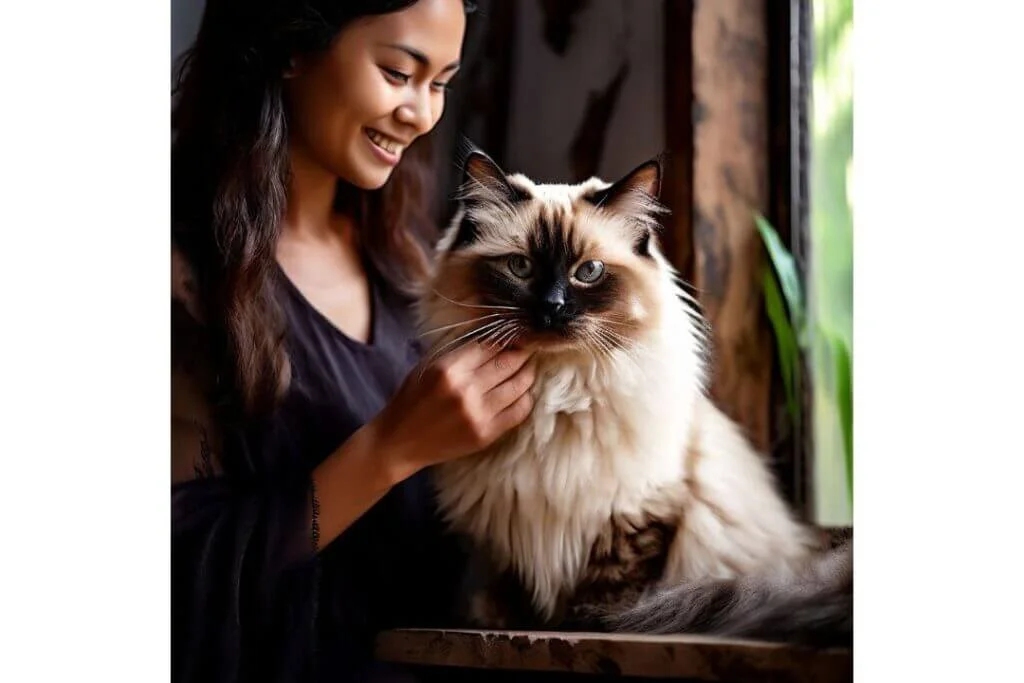
Balinese Cats
Ideal Home Settings
Balinese cats thrive in active households where they can receive plenty of attention and stimulation. They enjoy having space to explore and play.
Adaptability to Different Environments
Balinese cats are quite adaptable and can adjust to various living environments, from apartments to larger homes, as long as they have enough mental and physical stimulation.
Ragdoll Cats
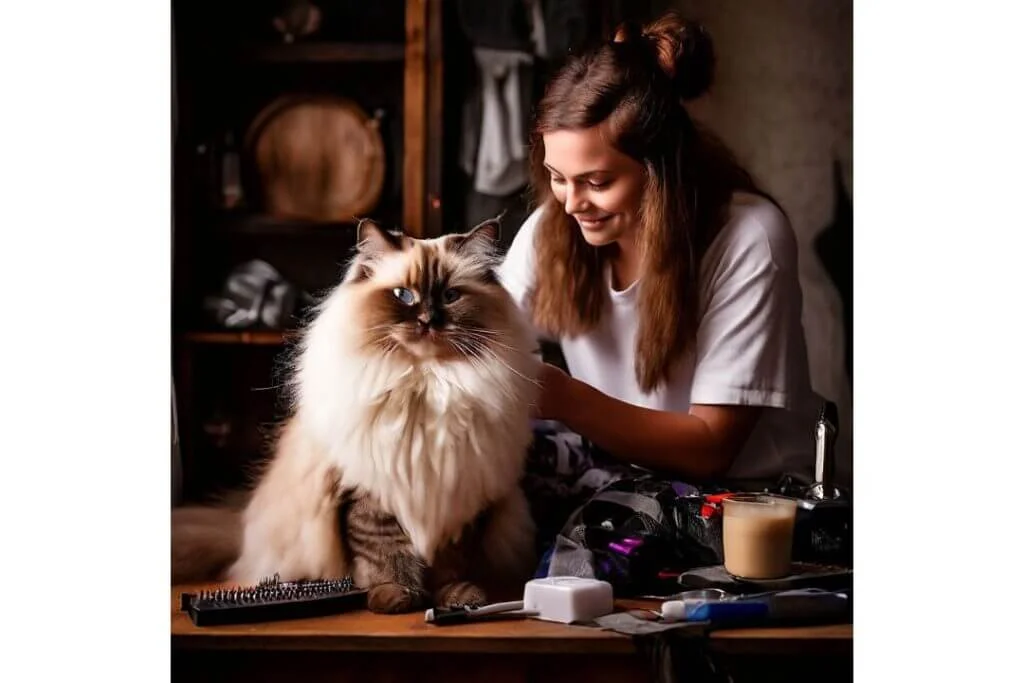
Ideal Home Settings
Ragdolls are well-suited to quiet, relaxed households. They enjoy a calm environment where they can lounge comfortably.
Adaptability to Different Environments
While they prefer more peaceful settings, Ragdolls can adapt to different living conditions. However, they do best in homes where their laid-back nature is respected.
Training and Exercise
Balinese Cats
Training Techniques
Balinese cats are intelligent and can be trained to perform tricks, use a litter box, and even walk on a leash. Positive reinforcement techniques work best.
Exercise Requirements
These cats are active and require daily playtime to expend their energy. Interactive toys and climbing structures are beneficial.
Ragdoll Cats
Training Techniques
Ragdolls are also trainable, though they might not be as eager as Balinese cats. They respond well to gentle training methods and enjoy learning simple commands.
Exercise Requirements
Ragdolls are less energetic but still need regular playtime to stay healthy. They enjoy interactive toys and moderate exercise routines.
Social Needs
Balinese Cats
Social Behavior
Balinese cats are social butterflies. They love interacting with their human family and can become lonely if left alone for long periods.
Playtime and Activities
They thrive on interactive play and mental stimulation. Puzzle toys, feather wands, and laser pointers are excellent choices.
Ragdoll Cats
Social Behavior
Ragdolls are highly sociable and form deep bonds with their owners. They enjoy being around people and can be quite affectionate.
Playtime and Activities
While they enjoy playtime, Ragdolls are more laid-back. They appreciate gentle play and activities that involve close interaction with their owners.
Health and Longevity
Balinese Cats
Common Health Issues
Balinese cats are generally healthy but can suffer from genetic conditions like progressive retinal atrophy and dental problems.
Lifespan
With proper care, Balinese cats can live between 15 to 20 years.
Ragdoll Cats
Common Health Issues
Ragdolls are susceptible to hypertrophic cardiomyopathy and bladder issues. Regular vet visits are essential to maintain their health.
Lifespan
Ragdolls typically live between 12 to 15 years, though some can live longer with proper care.
Breeding and Genetics
Balinese Cats
Breeding Practices
Responsible breeding practices are crucial to maintain the health and quality of Balinese cats. Genetic testing for hereditary conditions is recommended.
Genetic Considerations
Balinese cats can carry genes for conditions like PRA and should be screened to prevent passing these traits to offspring.
Ragdoll Cats
Breeding Practices
Breeding Ragdolls requires attention to genetic health, particularly for conditions like HCM. Reputable breeders focus on maintaining the breed’s gentle temperament and robust health.
Genetic Considerations
Ragdolls should be screened for HCM and other hereditary issues to ensure healthy kittens.
Cost and Availability
Balinese Cats
Average Cost of Ownership
Balinese kittens can cost between $600 to $1,200, depending on pedigree and breeder reputation. Additional costs include grooming supplies, food, and veterinary care.
Availability from Breeders
Balinese cats are less common than some breeds, so finding a reputable breeder may take some research.
Ragdoll Cats
Average Cost of Ownership
Ragdoll kittens typically range from $800 to $2,500. Their larger size and grooming needs can also affect overall ownership costs.
Availability from Breeders
Ragdolls are widely available from reputable breeders, but it’s important to ensure they follow ethical breeding practices.
Ragamese Cat: A Comprehensive Guide In 2024
Munchkin Ragdoll Cat: A Comprehensive Guide in 2024
Suitability for Families
Balinese Cats
Best Family Setups
Balinese cats are great for active families who can provide plenty of attention and playtime. They are particularly good with older children.
Interaction with Children
They are affectionate and enjoy playing with children, though they might not tolerate rough handling.
Ragdoll Cats
Best Family Setups
Ragdolls are ideal for families looking for a calm and gentle pet. Their relaxed nature makes them excellent companions for children.
Interaction with Children
Ragdolls are patient and tolerant, making them great for families with young kids who can learn to handle them gently.
Pros and Cons
Balinese Cats
Pros
- Highly intelligent and trainable
- Affectionate and social
- Minimal grooming requirements
Cons
- Can be vocal and demanding
- Requires a lot of attention and stimulation
Ragdoll Cats
Pros
- Gentle and affectionate
- Adaptable to various living situations
- Good with children and other pets
Cons
- Requires regular grooming
- Prone to certain health issues
Comparison Table
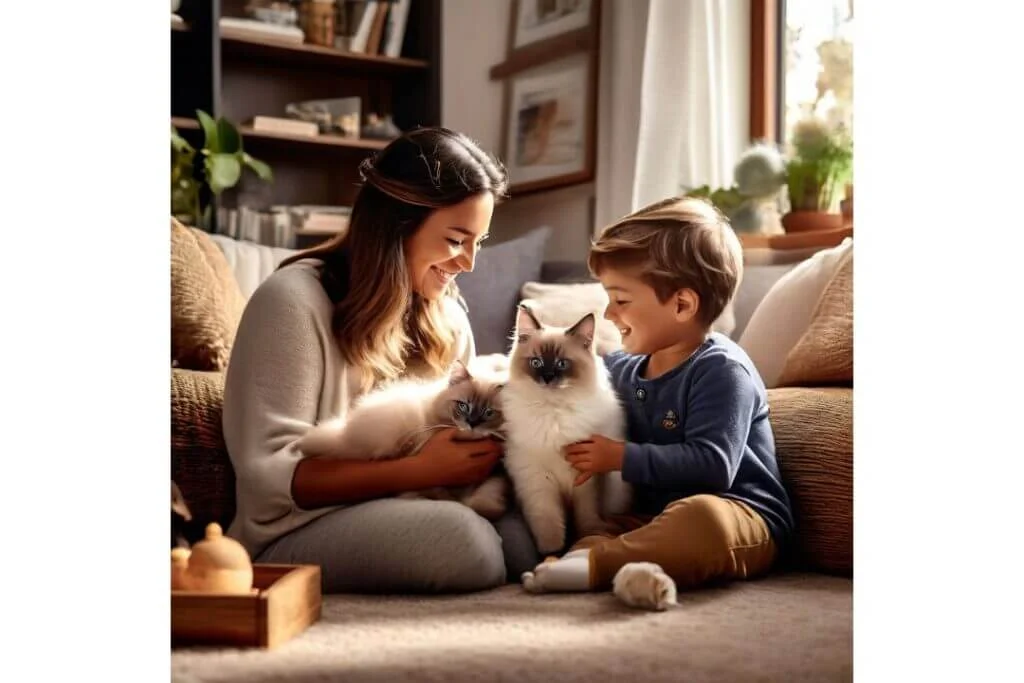
| Feature | Balinese Cats | Ragdoll Cats |
| Size | Medium | Large |
| Coat Length | Medium | Semi-long |
| Grooming Needs | Low | Moderate to High |
| Temperament | Playful and Energetic | Calm and Gentle |
| Interaction with Kids | Good | Excellent |
| Common Health Issues | PRA, Dental Issues | HCM, Bladder Issues |
| Lifespan | 15-20 years | 12-15 years |
| Cost | $600 – $1,200 | $800 – $2,500 |
Conclusion: Balinese vs. Ragdoll Cat
Choosing between a Balinese and a Ragdoll cat ultimately depends on your lifestyle and what you are looking for in a feline companion. Balinese cats are ideal for those who want an active, playful, and social pet that requires minimal grooming. On the other hand, Ragdolls are perfect for those who prefer a calm, affectionate, and gentle cat that enjoys lounging and cuddling. Both breeds offer unique benefits and will bring joy and companionship to any household.
FAQs
What are the key differences between Balinese and Ragdoll cats?
Balinese cats are more active and playful, with a medium-length coat that requires less grooming. Ragdolls are larger, calmer, and need more grooming due to their semi-longhaired coat.
Which cat breed is better for families with children?
Ragdolls are generally better for families with young children due to their gentle and patient nature. Balinese cats are also good with children but may be more energetic and vocal.
How much grooming do Balinese and Ragdoll cats require?
Balinese cats need minimal grooming, usually just a weekly brushing. Ragdolls require more frequent grooming, at least twice a week, to keep their coat free of mats and tangles.
What are the common health issues for Balinese and Ragdoll cats?
Balinese cats can suffer from progressive retinal atrophy (PRA) and dental issues. Ragdolls are prone to hypertrophic cardiomyopathy (HCM) and bladder stones.
Where can I find reputable breeders for Balinese and Ragdoll cats?
Reputable breeders can be found through breed-specific clubs and organizations, as well as through referrals from veterinarians and cat fanciers. Always ensure that breeders follow ethical practices and conduct necessary health screenings.

